10 most common dog skin issues
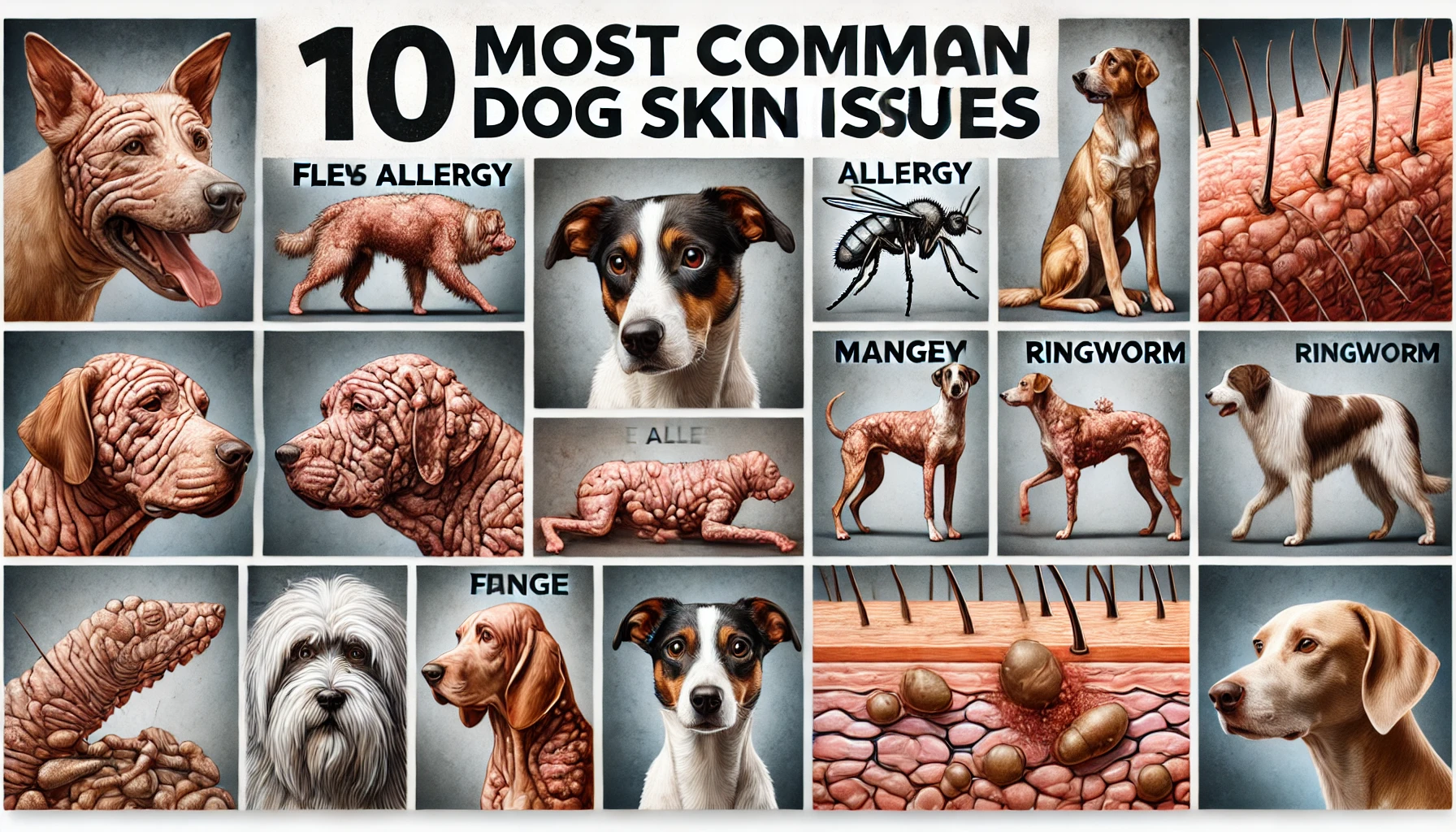
To know about 10 most common dog skin issues is very much important for a dog owner. Understanding and managing dog skin conditions can significantly enhance your dog’s quality of life. This guide not only explores the most common skin issues but also includes visual aids like tables and charts to help you recognize and treat these conditions effectively.
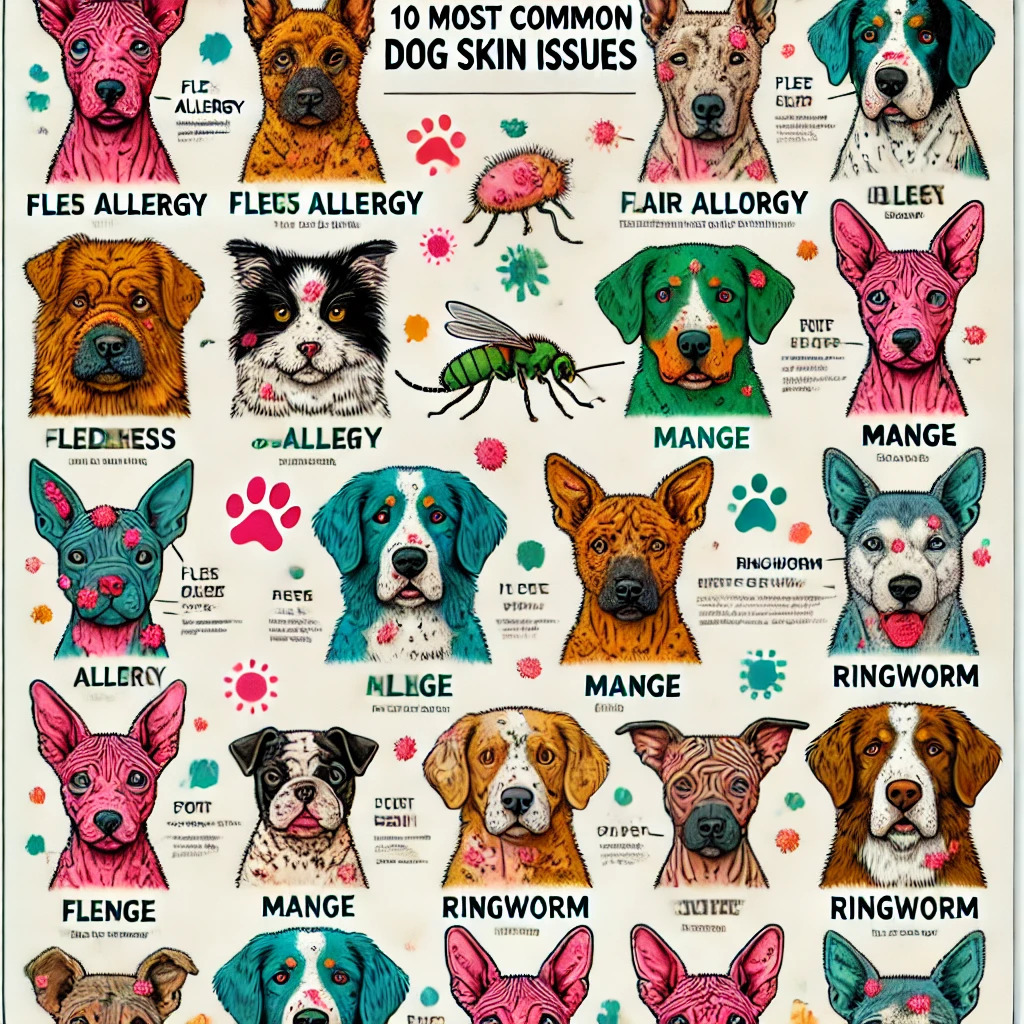
The top 10 most common dog skin issues are mentioned below:
1. Flea Allergy Dermatitis

Overview
A hypersensitive reaction to flea bites, which is the most prevalent form of allergic dermatitis in dogs. It is also considered as one of the 10 most common dog skin issues.
Symptoms and Treatment Table
| Symptoms | Treatment |
|---|---|
| Severe itching and red spots | Flea control products |
| Hair loss, especially on the tail | Anti-inflammatory medications |
| Small red dots on skin | Medicated shampoos |
2. Atopic Dermatitis
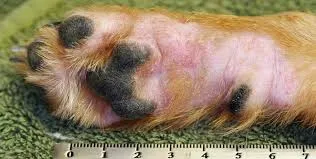
What is It?
A chronic skin disease, one of the 10 most common dog skin issues, is associated with environmental allergies.
Management Strategies
- Environmental Control: Reducing exposure to known allergens.
- Skin Care: Regular baths with hypoallergenic products.
- Medication: Use of corticosteroids or cyclosporine.
3. Hot Spots (Acute Moist Dermatitis)
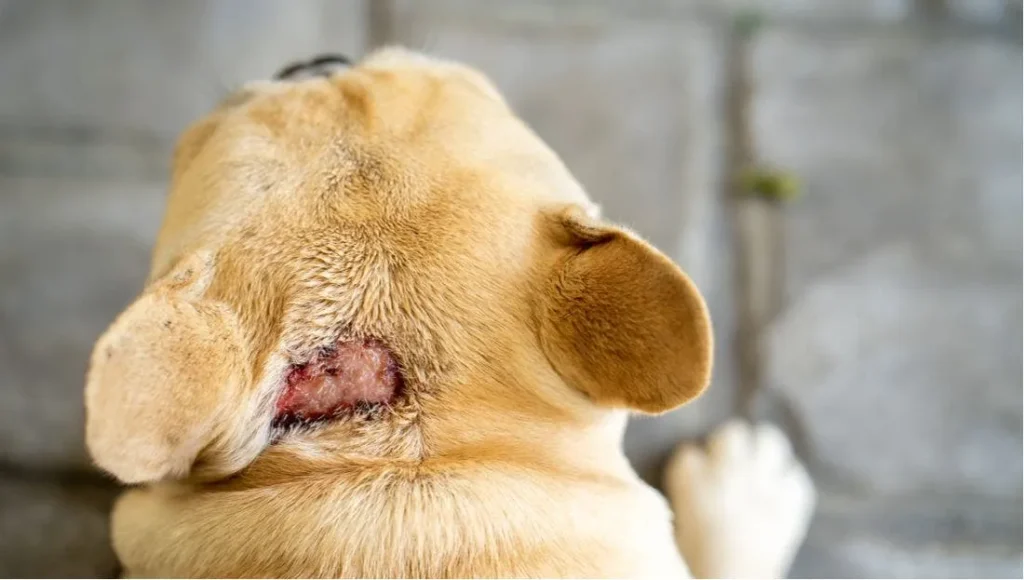
Quick Facts
Rapidly developing, painful skin infections that appear hot and moist.
Effective Treatments
- Cleaning and drying the affected area.
- Antibiotics and pain relief medications.
4. Mange
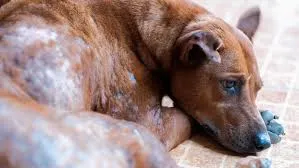
Types of Mange
Two primary types affect dogs: Sarcoptic and Demodectic mange.
Treatment Protocols Table
| Type | Treatment |
|---|---|
| Sarcoptic Mange | Prescribed scabicides, environmental cleaning |
| Demodectic Mange | Miticidal shampoos, possibly long-term care |
5. Ringworm
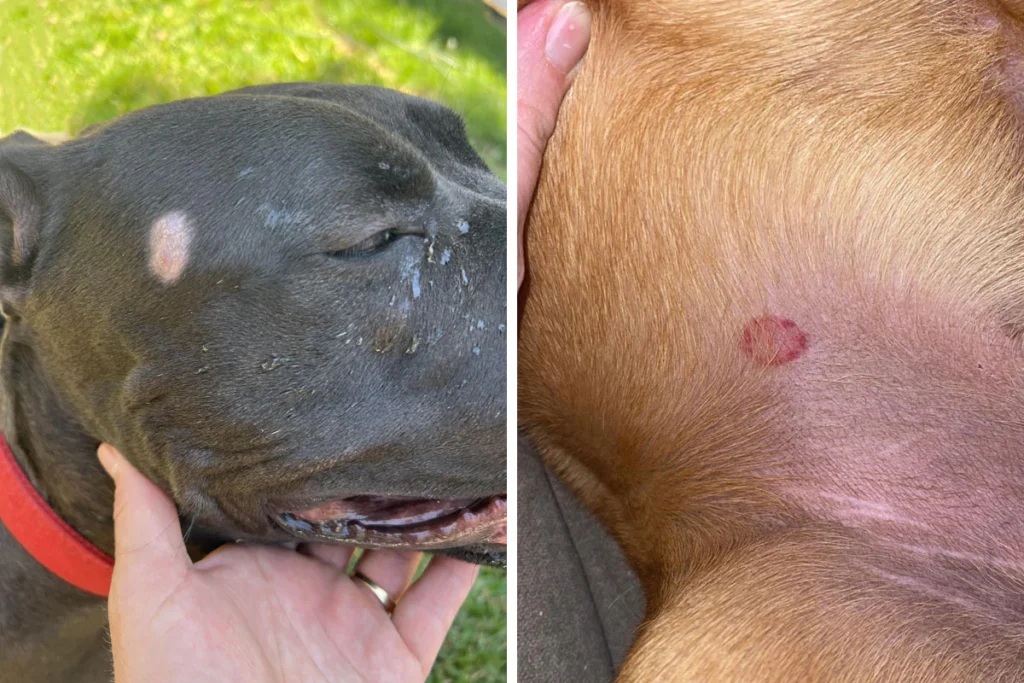
Overview
A fungal infection affecting skin, hair, and nails.
Symptom and Treatment Chart
| Symptom | Treatment |
|---|---|
| Ring-shaped hair loss | Oral and topical antifungals |
| Crusty, scaly skin | Environmental decontamination |
Do you know?
Health of a dog is directly proportional to the amount and quality of food a dog eats. Hence, it is deeply essential to know how much food should you feed your dog.
6. Yeast Infections
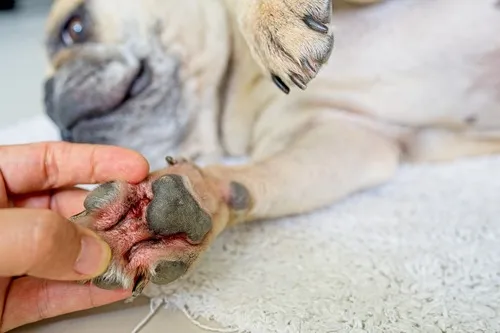
What Causes It?
Caused by an overgrowth of the yeast Malassezia.
Symptoms and Treatments Chart
| Symptoms | Treatment |
|---|---|
| Itchy, greasy skin | Antifungal shampoos |
| Strong odor | Oral antifungals |
7. Food Allergies
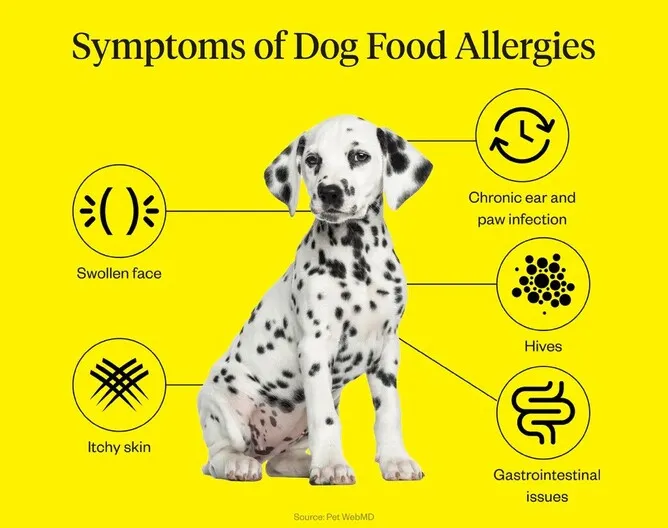
Impact
Can cause chronic itching and gastrointestinal symptoms.
Treatment Options
- Elimination diets to identify allergens.
- Hypoallergenic diets.
8. Contact Dermatitis
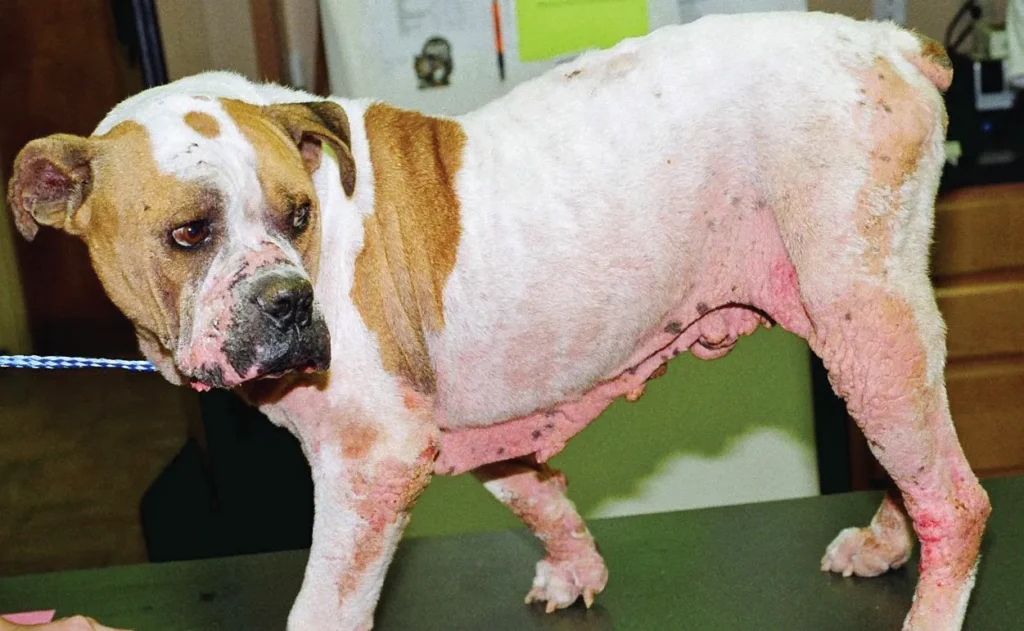
Introduction
Reaction to physical contact with various irritants or allergens.
Common Triggers and Treatments Table
| Trigger | Treatment |
|---|---|
| Cleaning products | Removal and topical treatments |
| Plants, rubber materials | Corticosteroids for inflammation |
9. Seborrhea
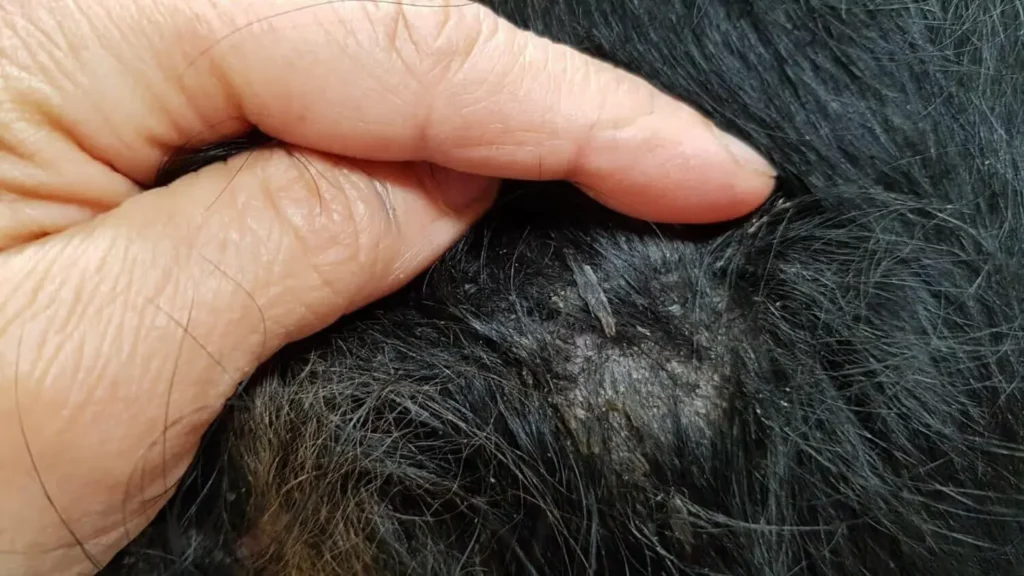
What is Seborrhea?
A condition causing flaky skin and oiliness, often related to an underlying medical issue.
Symptoms and Management Chart
| Symptoms | Treatment |
|---|---|
| Flaky, oily skin | Medicated shampoos |
| Foul-smelling odor | Treat underlying conditions |
10. Autoimmune Skin Disorders
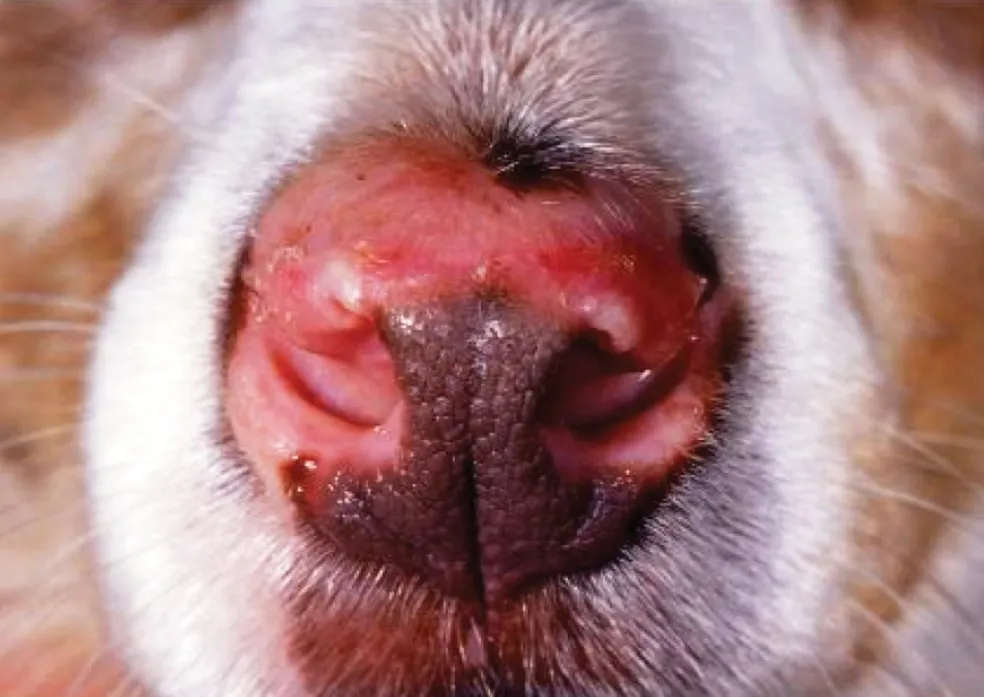
Examples
Diseases where the immune system attacks the body’s own skin cells.
Common Types and Treatments Chart
| Disease | Treatment |
|---|---|
| Pemphigus | Immunosuppressive medications |
| Lupus | Long-term immunosuppression |
Conclusion
By recognizing the signs and symptoms of common dog skin illnesses and treating them promptly, you can greatly improve your pet’s comfort and health. Always consult a veterinarian for proper diagnosis and treatment to ensure the best care for your pet’s specific skin conditions.
How do you treat a dog’s skin problem?
Treatment depends on the cause but generally involves keeping the area clean, using medicated shampoos or creams, and sometimes antibiotics or anti-inflammatory drugs. Always consult a vet for the best treatment plan.
What is the most common skin infection in dogs?
Bacterial skin infections (pyoderma) are very common. They often look like pimples or red bumps, and the skin may appear red and inflamed.
What do dog skin conditions look like?
They can vary widely but often include symptoms like redness, rash, bumps, hair loss, or frequent scratching.
How do you treat a rash on a dog?
Keep the area clean and dry, apply a vet-recommended topical treatment, and consider antihistamines for allergies. Severe cases may require corticosteroids or antibiotics.
Is Vaseline OK for dogs’ rash?
While Vaseline isn’t harmful and can protect the skin, it’s not a cure. It can help with dryness but doesn’t treat underlying issues. Use it cautiously as it can also trap bacteria against the skin.
Can I treat my dog’s rash at home?
Yes, mild rashes can often be treated at home with proper cleaning and over-the-counter sprays or creams designed for dogs. However, persistent or severe rashes should be evaluated by a veterinarian to ensure proper treatment and to rule out more serious conditions.






